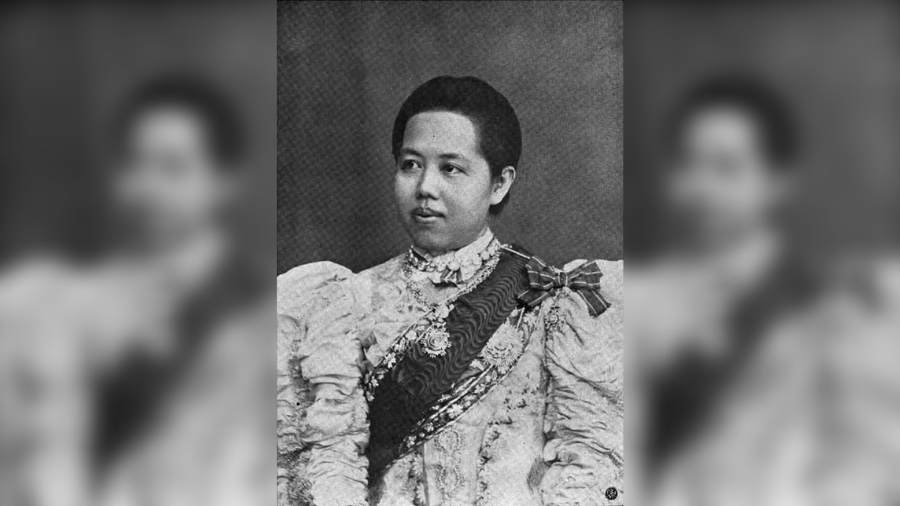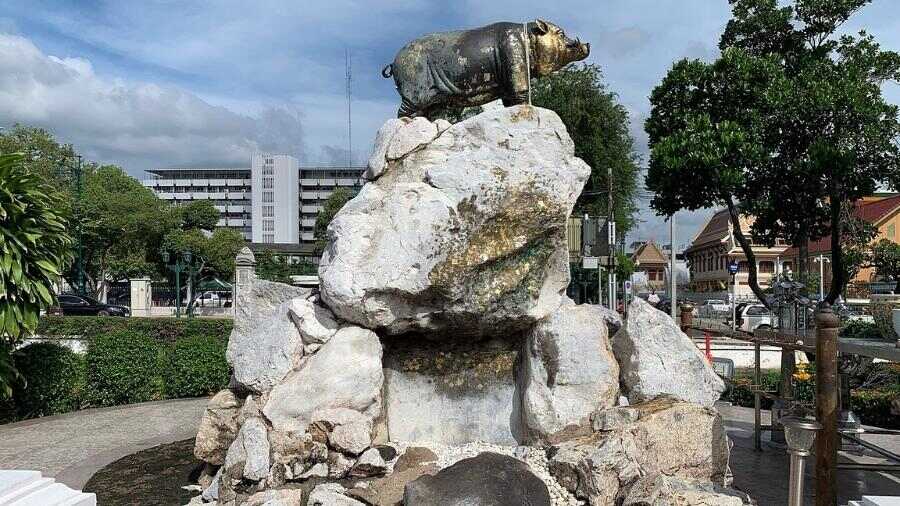There’s no doubt that Bangkok has endless attractions for its visitors. Those who plan a trip to Thailand’s popular capital city usually look forward to its well-known charms — stunning temples, vibrant nightlife and lip-smacking street food. The itinerary doesn’t quite feature a visit to a statue of a pig. But, if travels in a foreign land don't take you off the beaten track, is the journey even worth it?
A not-so-bizarre memorial
One among Bangkok’s lesser-known and less-visited spots, the Pig Memorial — essentially just a large metal-cast statue of a pig — might sound like a bizarre spot to check out until you get to know the history behind it. Built in 1913, the memorial was constructed to commemorate the 50th birthday of Queen Phatcharinthra, wife of King Rama V.

Queen Saovabha Phongsri, or Phatcharinthra, to whom the Pig Memorial is dedicated Wikimedia Commons
The monument had three sponsors — Prince Narissara Nuwattiwong, Phraya Phipat Kosa (Celestino Xavier) and Phraya Ratcha Songkhram (Kon Hongsakun). According to the Chinese and Thai calendars, all three sponsors, and the queen to whom the memorial was being dedicated, were born in the year of the pig.
The pig statue, thus, stands as a big nod to their birth year, which it is meant to honour. (In Chinese and Thai calendars, each year represents an animal of the zodiac. A total of 12 animals complete one zodiac cycle of 12 years. Every 12th year is the year of the pig.)

A metal-cast pig statue holds pride of place at the memorial Wikimedia Commons
Although the memorial is quite compact, its quaint charm is hard to miss. It was designed by one of the sponsors — Prince Narissara Nuwattiwong — who was well-known for his artistic talent. The huge metal-cast pig sits on a stone plinth, and a decorative canopy shelters the statue from heat and rain. At its base lie a few more statues of pigs and Chinese and Thai deities.
The memorial is located on the edge of the old city moat, which was dug way back in 1771 for defensive purposes. Spanning across the moat is the Pi Kun Bridge. Interestingly, the bridge came up in 1911, which too was the year of the pig. It commemorated the 48th birthday of Queen Phatcharinthra.

The Pi Kun Bridge, a few steps from the Pig Memorial, gracefully arches over the old city moat Rangan Datta
Initially, the bridge had no name but when the Pig Memorial came up next to it in 1913, the bridge began getting referred to as Saphan Mu (Pig Bridge) or Saphan Pi Kun Mu (Year of Pig Bridge). Today, it is better known as the Pi Kun Bridge. The arched pedestrian overpass has four slender decorative pillars in the four corners, and they represent the birth candle of each cycle.

The elegant Pi Kun Bridge and its four slender pillars Rangan Datta
Considering how perfectly bedazzling every bit of Bangkok’s standard travel trail is, the quiet Pig Memorial by the Pi Kun Bridge often gets sidelined. However, the location is very close to two of the city’s most visited sites — the Grand Palace (1 km) and Wat Pho or the Temple of Reclining Buddha (500m). So for those who love to wander off and explore the more curious spots in a foreign land, a short walk to a pig statue can make for quite a unique travel story.
Rangan Datta is a mathematics and management teacher by profession and a travel writer and photographer by passion. He has been addicted to discovering off-beat places since his undergraduate days at St. Xavier's College. Blogging and contributing to Wikipedia are his other passions.


